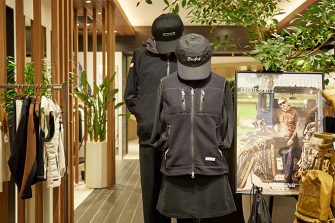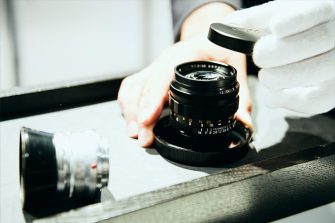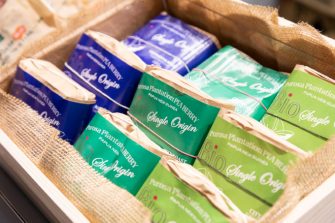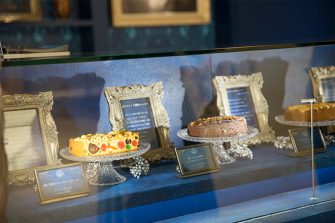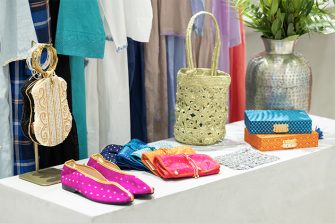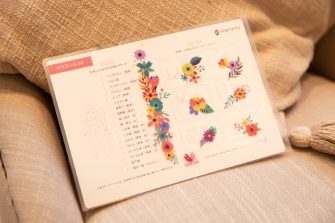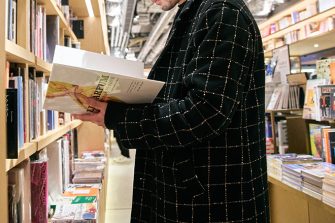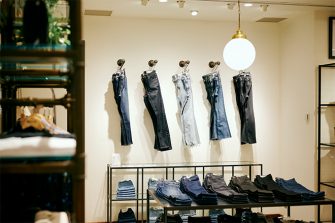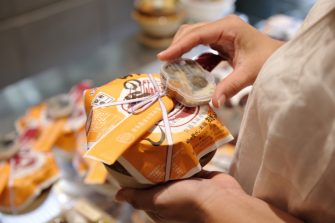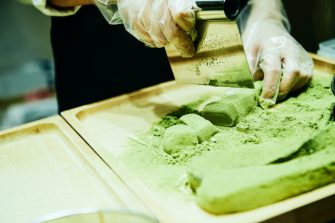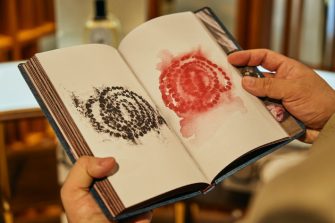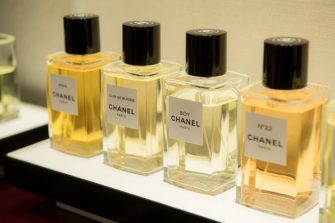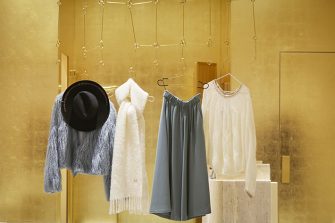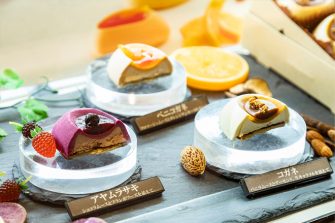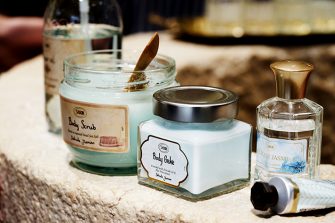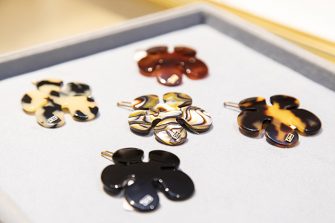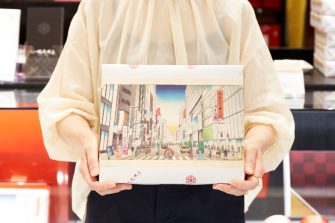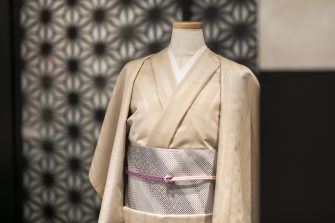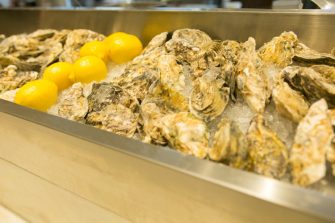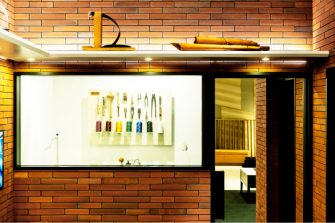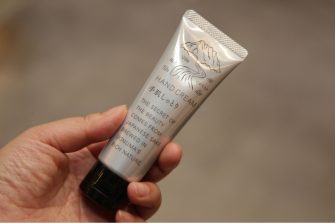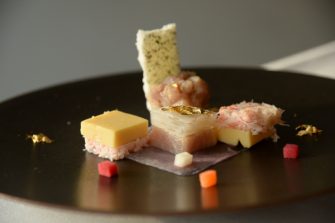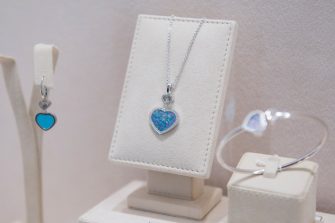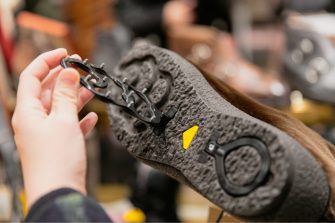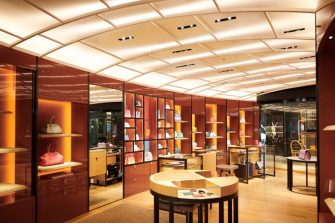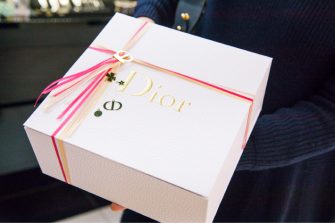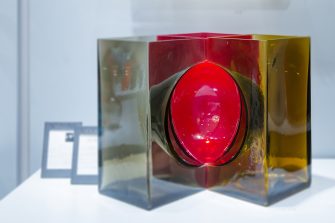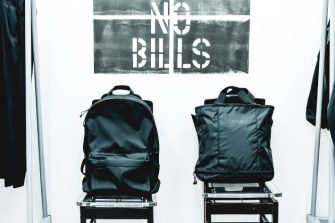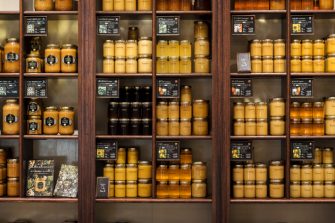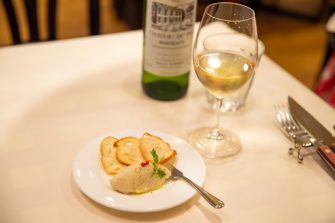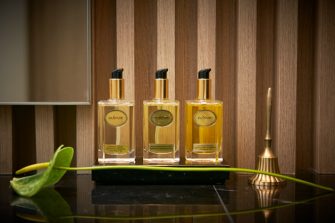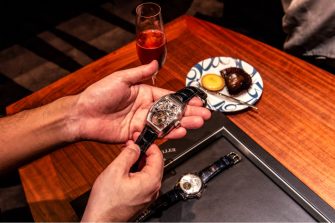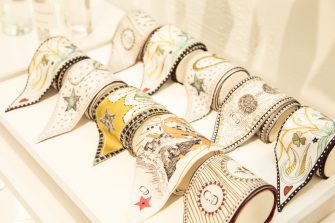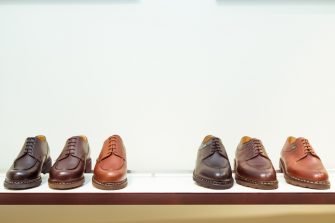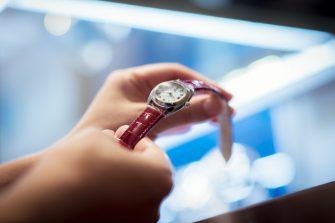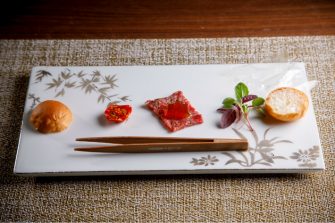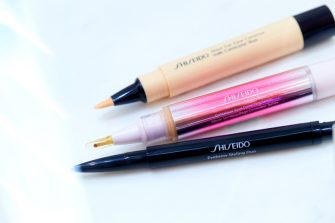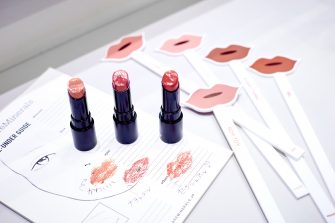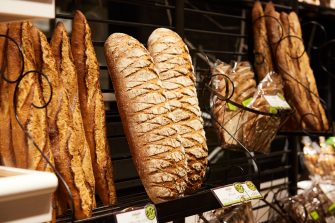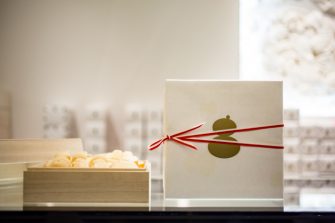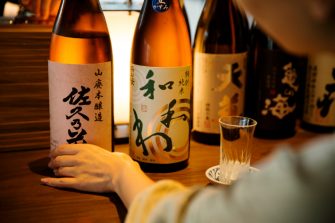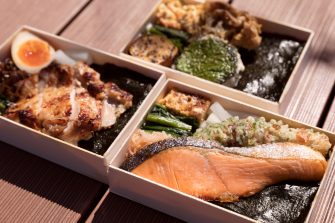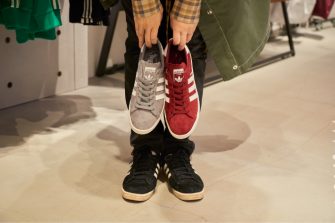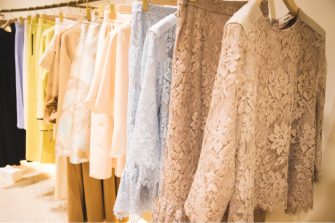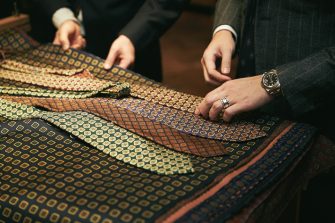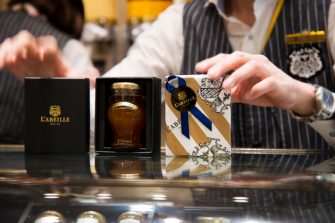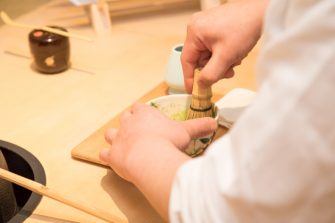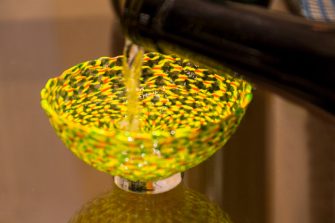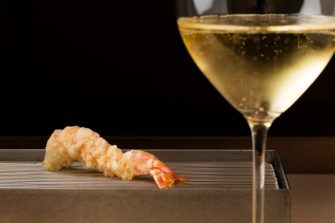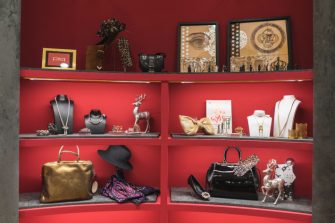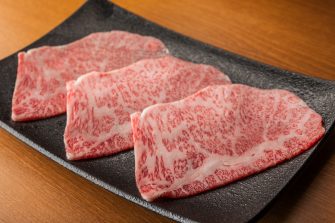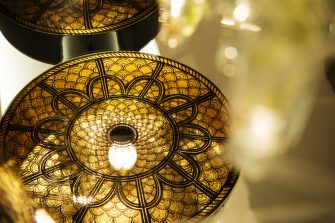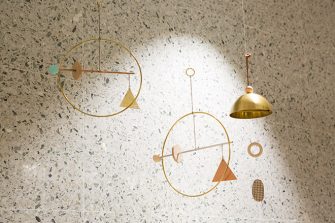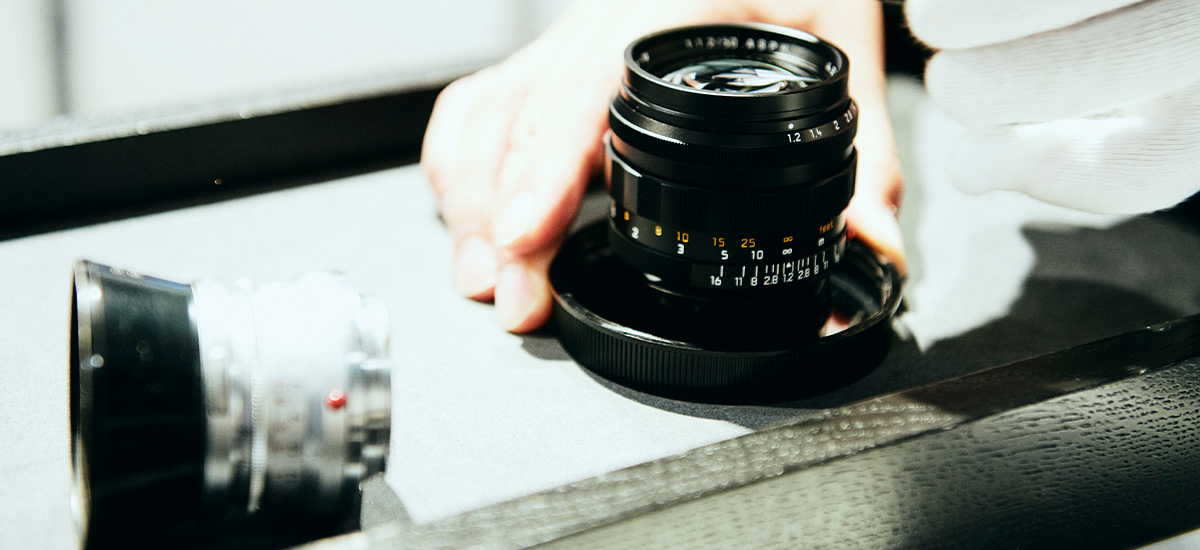

GINZA SIX EDITORS
ファッション、ジュエリー&ウォッチ、ライフスタイル、ビューティ、フード…
各ジャンルに精通する個性豊かなエディターたちが、GINZA SIXをぶらぶらと
歩いて見つけた楽しみ方を綴ります。
老舗の「今」を知る旅、イン・ザ・GINZA SIX The “Right Now” of the Venerable Old Stores at GINZA SIX
山下 英介 フリーエディター
GINZA SIX EDITORS Vol.112
食事や買い物といえばチェーン店しかない、味気のない新興住宅地で育ったことの裏返しだろうか。大人になった僕は、生活すべてにおいて歴史とか様式美とか、それに裏付けられた味わいってやつを求める、メンドクサイ男になってしまった。
そんな僕にとって、長い歴史を誇る老舗が軒を連ねた銀座とは、侵すべからざる存在である。「煉瓦亭」のオムライスで腹ごしらえをしたら、「カツミ堂」や「三共カメラ」でライカの古いレンズを探して、歩き疲れたら「カフェ・ド・ランブル」でひと休み……ってのが理想の休日。三つ揃いのスーツに中折れ帽をかぶって、鼻歌まじりに並木通りあたりを闊歩しているときの僕は、1920年代の〝モボ〟気分に浸っているので、できればひとりにしておいていただきたい。
でも、決して僕は単なる懐古主義者ではない……と思っている。なぜなら僕の仕事はファッションエディター。明治以降、世界中から最先端かつ最高級の文物を取り入れながら進化し続けてきた銀座という街は、そのフィールドワークに最もふさわしい街でもあるのだ。ずいぶん前置きが長くなってしまったが、僕がなぜ「GINZA SIX」に通うのかといえば、ここには大好きな老舗や、歴史あるブランドの〝今〟が、ジャンルを超えて凝縮されているからなのだと思う。
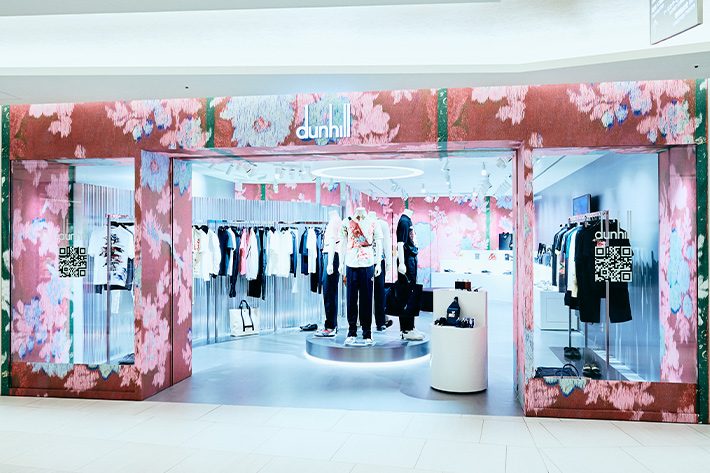
たとえば、ダンヒル。1893年に英国で創業し、ビスポークスーツ、ドライビンググッズに至るまで、紳士に必要なありとあらゆる品物をそろえた、言わずと知れた名門ブランドである。日本では銀座中央通りにバーバーやテーラー、バーを備えた本店を構え、僕たち日本人に本場のジェントルマンスタイルを伝え続けてくれている。
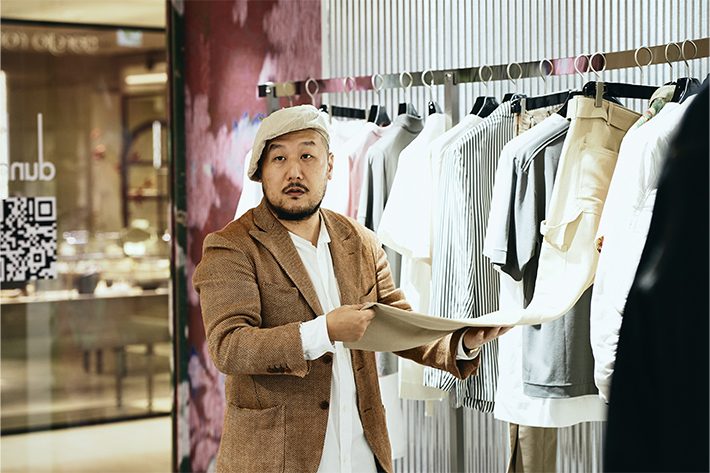
しかし、こちらが「GINZA SIX」にオープンさせた「ダンヒル GINZA コンセプトストア」(2F)は、ひと味違う。その商品のラインナップは、今まで日本では手に入りにくかった、最新のランウェイコレクションが中心。オーバーサイズのニットやワークパンツ、スニーカーなどなど、今まで僕たちがダンヒルに抱いていたイメージを覆す、ストリートテイストのカジュアルアイテムばかりである。

とはいえ、もちろん名門ダンヒルらしさは健在。一見ラフなジャージーであってもその素材は驚くほど上質だし、シャツにプリントされた幾何学模様は、ブランドのルーツに紐づくクラシックカーの、塗装が剥げた質感からインスパイアされたもの。業界でも屈指の洋服マニアとして知られるクリエイティブ・ディレクター、マーク・ウェストン氏ならではの深い考察が、ひとつひとつに息づいている。また、上質なテーラードウエアの内部には複雑に組み合わせた芯地が使われているのだが、それを大胆にもジャケット(330,000円 ※以下全て税込価格)の表地として使ってしまうあたりには、確信犯的な遊び心も感じさせるのだ。

なかでも個人的に気になったのは、英国紳士御用達のアタッシュケースを、なんと今どきサイズのミニショルダーバッグにアレンジしてしまった、『ロックバッグ』というシロモノ(ブラックのパテッドレザー320,100円・ゴールドのメタル573,100円)。まさにクラシックとモダンのフュージョンともいえるこちらが、ダンヒルの新しいアイコンバッグなのだという。

これならカジュアルな装いにも気軽に取り入れられそうだが、専門の職人が手がけただけあって、つくりは過剰なまでに超本格派! 精巧なケースの設計から真鍮製の金具、そして開閉した時の「パカッ」という手応えに至るまで、本物のアタッシュケースを完璧に再現している。正直いってお値段はカワイくないし、金属製のものにいたっては中にモノを入れられないほどの重量感なのだが、こういうユーモアのセンスを備えた男こそ、現代のジェントルマンだと思うのだ。
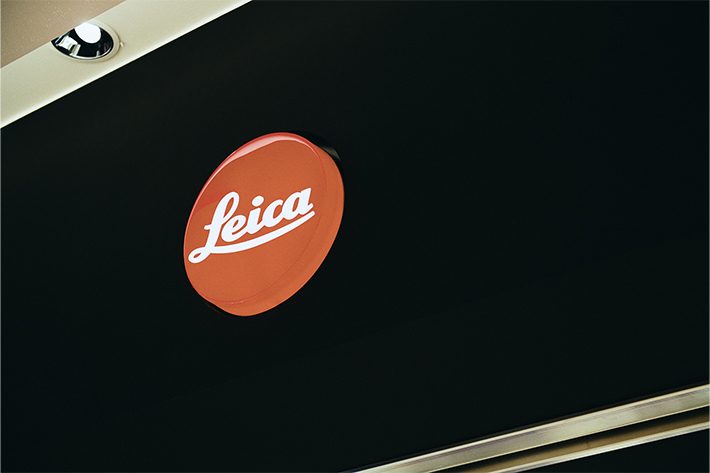
さて、『ロックバッグ』に後ろ髪引かれつつ向かった次なる目的地は、「ライカ」の直営店である「Leica Store」(5F)である。何を隠そう、僕はちょっとしたライカの愛好家。フィルム機から最新のデジタルカメラまで、編集者としてはそこそこのコレクションを所有し、仕事でもよく使っている。
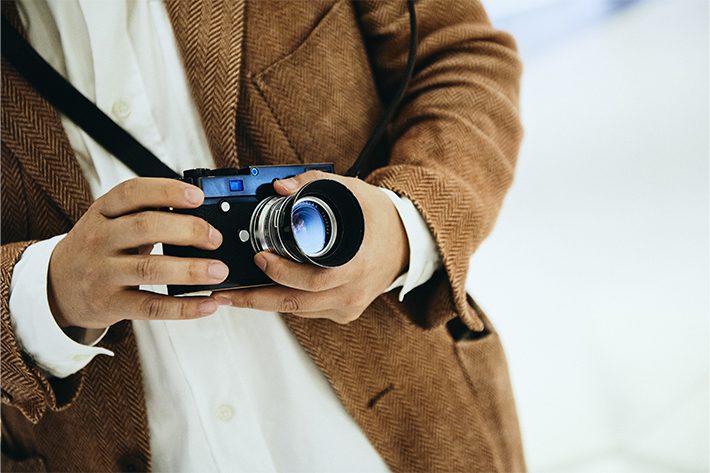
紳士諸兄ならご存知だろうが、銀座という街は、クラシックカメラとライカの街でもある。これほどカメラ店が密集して、希少かつ状態のよいレンズやカメラが手に入りやすいエリアは、世界的に見ても唯一無二。コロナ禍以前は、外国人観光客で大繁盛していたものだ。
そんな土地柄ゆえか、「GINZA SIX」と同じ銀座6丁目には、世界で初めてつくられたというライカの直営店がある。ここでは現行アイテムのフルラインナップをそろえるとともに、万全の修理体制を整えており、僕もしょっちゅうお世話になっている。
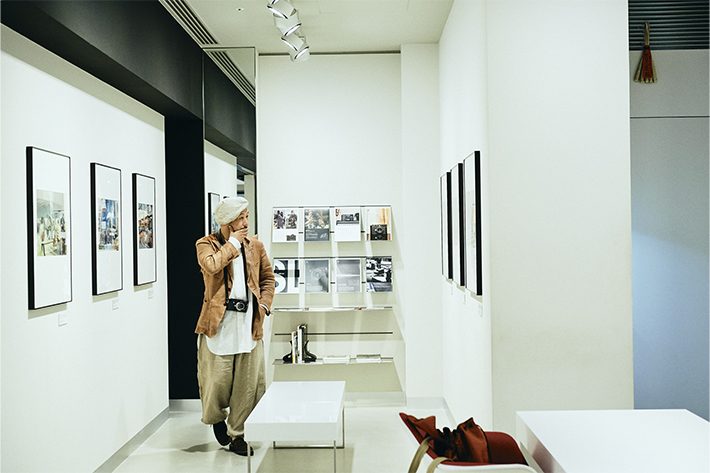
直営店があるのに、どうして目と鼻の先にある「GINZA SIX」にもLeica Storeをつくったのだろう?と思わなくもなかったが、これが使い勝手がいい。定休日がなく、しかも直営店より営業時間が長いので、仕事が終わったあとやディナーのついでに、ふらっと寄ることができるのだ。
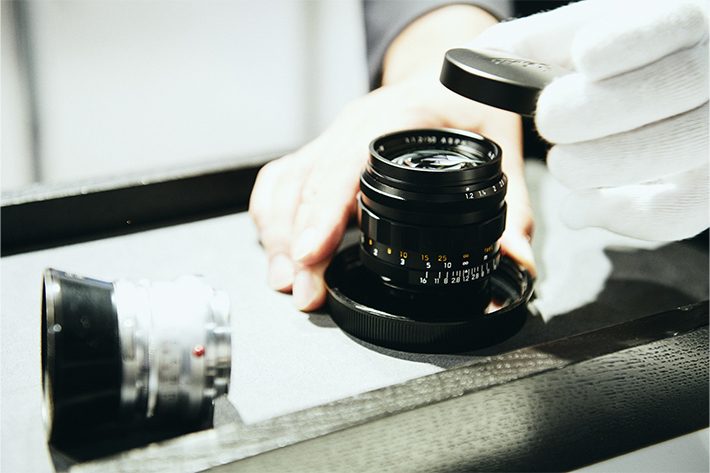
広々とした開放的な空間のせいか、いつもは遠慮しがちな試し撮りも、ここなら気軽にバシバシ試せる。ライカにおける屈指の名作レンズを復刻した『ノクティルックスM f1.2/50mm ASPH.ブラック』(990,000円)や、僕の現在の主力機『ライカ SL2』に着けたいズームレンズ『バリオ・エルマリートSL f2.8/24-70mm ASPH.』(352,000円)など、憧れの高級レンズを次々と試写。
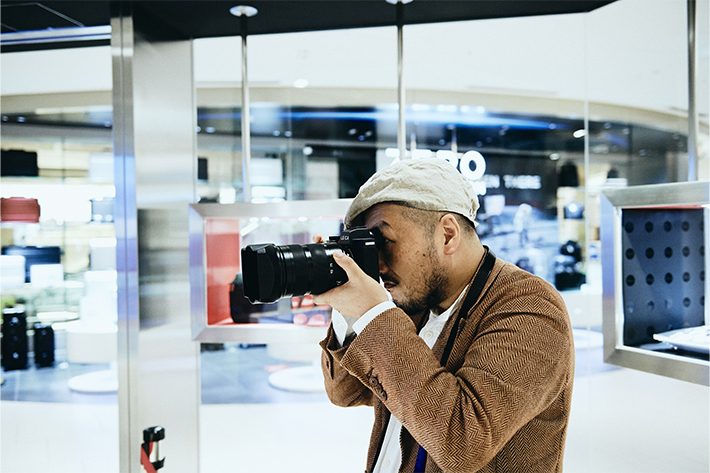
そして、このところ気になっていた、ライカ初のスマホ『LEITZ PHONE 1』(187,920円 ※GINZA SIX店では試写のみで販売はなし)を、初めて手に取る機会にも恵まれた。その凝ったつくりはもちろん、写り具合までも見事に〝ライカ的〟で、編集者としては「こんな写真が世の中に溢れちゃったらどうしよう?」と不安にさせられるほど。僕ももっと腕をあげないといけないなあ!
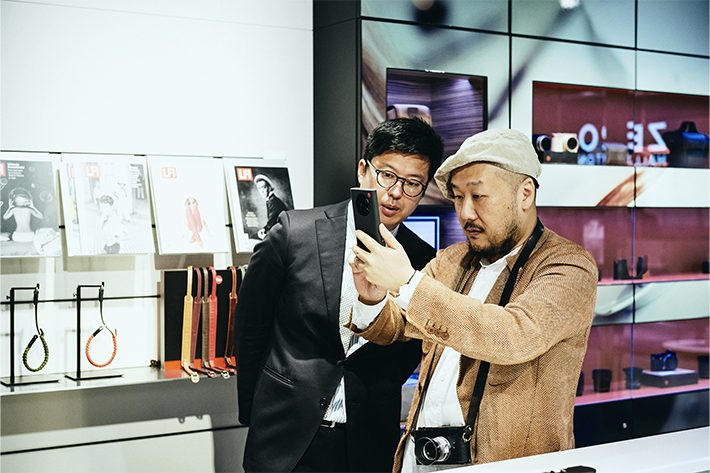
最近、時計やジーンズ、クルマ、カメラなど様々な分野でヴィンテージ人気が過熱しており、ライカのオールドレンズにも、驚くほどの高値がついている。それらを現行のアイテムと較べてみると、大概のケースで「昔のほうがよかった」と思わされることが多いのだが、ライカだけは別。昔のものと今のもの、それぞれにまた違った魅力があり、このデジタル時代においてもきちんと共存できているのだ。その分、ファンとしてはほしいモノだらけになってしまって非常に困るのだが…。
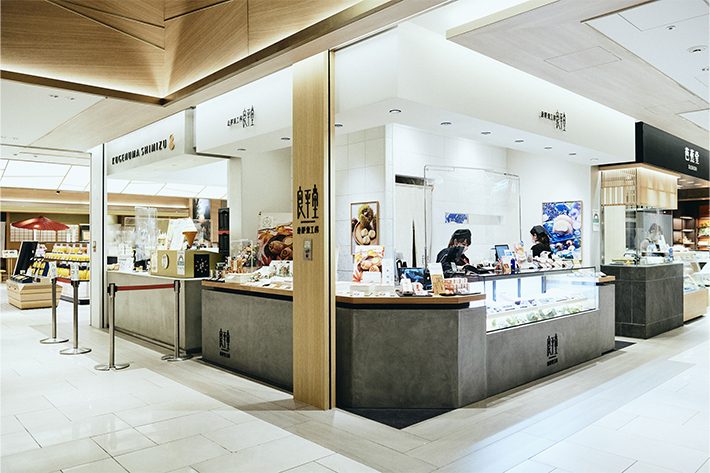
さて、試着&試写疲れに効く甘いものを求めて、移動したのは地下2階。ここには葉山の人気店マーロウや、言わずと知れた銀座千疋屋など、僕好みの名店が軒を連ねている。しかも「GINZA SIX」限定スイーツも売っていたりするから、油断ができない。そんな中、ふと目に留まったのが、岐阜県恵那市に本店を構える老舗和菓子店、「恵那栗工房 良平堂」の看板である。
実はちょうど昨年の秋、仕事で中山道を旅する機会があったのだが、その際に偶然こちらに立ち寄り、新栗でつくった栗きんとんのキュートなビジュアルと、東京で食べるそれとは全く異なる、豊かで複雑な味に驚かされたのだった。生まれて初めて体感した、木曽〜美濃エリアの〝山の文化〟を象徴するようなこの名店に、支店があったとは知らなかった!
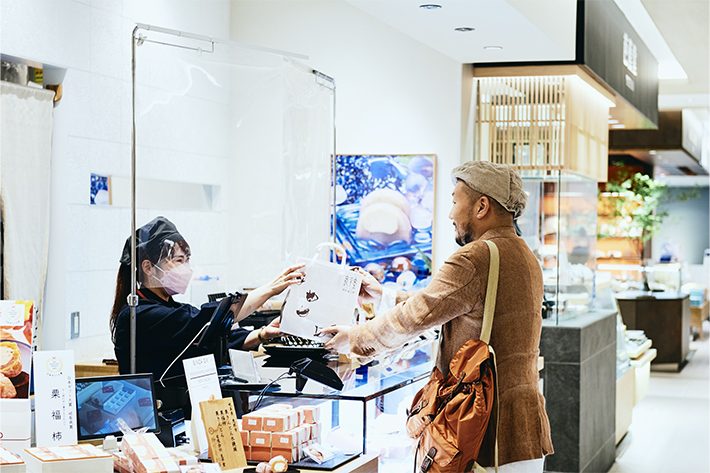
今日は朗らかな名物スタッフの加藤さんに勧められて、干し柿の中に栗きんとんを仕込んだオリジナルの逸品『栗福柿』(1個300円〜)など、何種類かのスイーツを購入。どちらも栗の自然な甘みを活かした風味だから、和菓子が嫌いな方でも美味しく頂けるに違いない。僕はあまり強くないほうだが、シングルモルトに合わせてもいいだろう。
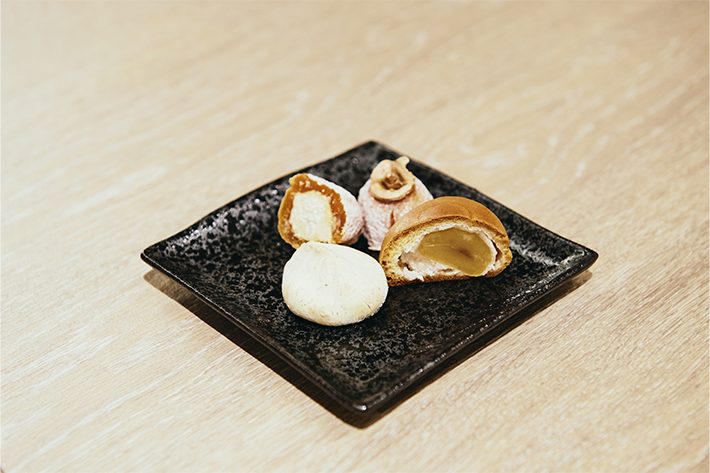
1893年創業のダンヒル、1914年創業のライカ、そして1946年創業の良平堂。ジャンルこそ全く異なるが、今日訪れた3つの老舗ブランドに共通するのは、その歴史に安住せず、新しい商品やサービスに果敢に挑戦する、前向きなスピリットだった。そうして進化し続けたからこそ、現在の地位があるのだろう。
なにかと大変な時期だけれど、僕も前を向いて頑張ろう! と、決意を新たにしたついでに、ライカのレンズでも1本買って帰るか…。えっ、そんな無謀な買い物をしたら奥さんに怒られるんじゃないかって? いや、それは心配ない。だって今日のお土産は、彼女の大好物である良平堂の栗きんとんなのだから。
Text:Eisuke Yamashita Photo:Yuichi Sugita Edit:Yuka Okada(81)
Maybe it’s a reaction to having been raised in a drab cookie-cutter housing development with nothing but chain stores and restaurants as shopping and dining options. But since becoming an adult, I’ve become difficult—in every aspect of my life I only want things with solid and authentic roots in history, in tradition, in formal beauty.
For me, Ginza, its streets lined with dignified shops boasting long, venerable histories, must never be infringed upon. I partake of a rice omelet at Rengatei or look for an old Leitz lens at Katsumido or Sankyo Camera. When I tire of walking, I take a break at Café de l’Ambre—the perfect day off. Striding down the Namiki-dori Street in my three-piece suit and fedora humming a tune, I’m in full-on modern boy mode, straight out of the 1920s. You’re advised to leave me be.
But for all that, I don’t think I’m simply stuck in the past. I’m no Luddite. That’s because I work as a fashion editor. Ginza has evolved constantly since the Meiji era by introducing the most avant-garde and most luxurious goods from around the world. There’s no better place for fashion fieldwork.
With my lengthy preamble concluded, I’ll tell you why I regularly visit GINZA SIX. It’s because the “right now” of the venerable shops and brands redolent of history that I love are all here in their admirable variety.

Dunhill, for example. It’s a famous brand—you don’t need me to tell you this—founded in England in 1893. It carries all the things that make a man a gentleman, bespoke suits and driving attire and goods among them. The Japan flagship on Chuo-dori Avenue provides a barber, a tailor, and a bar, giving us here in Japan true insight into the traditions and styles of the gentleman.

However, the Dunhill that opened in GINZA SIX, the Dunhill Ginza Six Concept Store on the second floor, is a bit different. The product lineup is primarily the latest runway collection, which had been difficult to locate in Japan. Oversized knits, work pants, sneakers and more—almost all streetwise casualwear, transforming our traditional conception of the brand.

Having said this though, the prestigious Dunhill we all know and love is very much present. A rough-looking jersey fabric—at first glance, at any rate—is of astonishingly high quality. A geometric print on a shirt is inspired by the look and textures of a classic automobile (part of the brand’s roots) with some paint stripped off. Every detail speaks eloquently to the imagination and meticulous working methods of the brand’s creative director, Mark Weston, known, even in the industry, as a premier fashion maven.
Luxury tailored clothing typically makes use of a complex combination of interlining on the inside. But this jacket (330,000 yen; all prices listed after tax) makes bold use of this as the outer material—a flagrant playfulness!

Personally, I really like what they call the Lock Bag (black padded leather: 320,100 yen; gold metal: 573,100 yen), a traditional British attaché case reinvented as a mini-shoulder bag. A true fusion of classic and modern, I’m told it’s the brand’s newest iconic bag.

The Lock Bag would pair quite naturally with casual attire, but because it’s handmade by dedicated craftspeople, the construction is authentic to the last degree. From the elaborate case design to the brass fittings to the satisfying solidity of the clasp when it opens and closes, it perfectly reproduces an authentic attaché case. On the downside, the price verges on the horrifying, and the metal version is so thick and heavy one could barely fit anything inside—but one imagines today’s gentlemen have just the sense of humor required to take this in stride. Or even seek it out.

With the Lock Bag slowing my will to move on, I head to my next spot: the Leica Store on the fifth floor, which is directly managed by Leica. I have to admit I’m a bit of a Leica enthusiast. As an editor, I have a decent collection of cameras, from film to the latest in digital. I use them often in my work.

As my gentlemen brethren know well, Ginza is the district for classic cameras and Leica. There’s a cluster of camera stores. In no other area in the world is it easier to find a rare lens or camera in good condition. This place bustled with foreign tourists before the pandemic.
No doubt this is why Leica opened its very first directly managed store anywhere in the world in Ginza 6-chome, the same district as where GINZA SIX is located. The store carries the company’s full lineup of current products and a full slate of repair services. I’m a regular customer myself.

I do have to wonder—why another Leica Store so close by at GINZA SIX? Whatever the reason, it’s certainly convenient—open seven days a week and for longer hours than the Ginza 6-chome store, which lets me stop by casually after work or on the way to dinner.

Maybe because the store is so open and spacious, I feel freer than I normally do to test out the cameras by taking a bunch of shots. I try a number of the high-end lenses I’ve yearned for, including the Noctilux-M 50mm f/1.2 ASPH (Black) (990,000 yen), a reproduction of one of Leica’s preeminent masterpieces, and the Vario-Elmarit-SL 24-70mm f/2.8 ASPH (352,000 yen), a zoom lens I want to put on my Leica SL2, my current mainstay.

I was lucky enough today, too, to hold in my hand Leica’s first smartphone, the Leitz Phone 1 (187,920 yen. Note that you can try it at the GINZA SIX store, but it’s not for sale). The construction is exquisite—which goes without saying—but the photos have that same splendid Leica look as well. As an editor, I almost start to worry about what will happen when everyone is able to take photos this good. The prospect’s a good push forward to achieve the next step up in skills.

Vintage has been really hot recently in various areas—watches, jeans, cars, cameras. Classic Leica lenses are fetching unbelievably high prices. In most cases, comparing vintage gear to the stuff today, you end up thinking the old stuff is better. Not so with Leica. The old and the new have their respective appeal. Both exist in perfect harmony, even in this digital age. Which is why, as a fan, there’s so much I end up wanting—which can be a problem.。

Feeling a little weary after trying on many clothes and taking many photos, I head to the second belowground floor for a sweet pick-me-up. So many famous restaurants I love! The popular Marlowe of Hayama and the renowned Ginza Senbikiya. What’s more, they sell sweets here available only at GINZA SIX. There’s no letting your guard down. Scanning the sights, my eyes alight on the sign for Ena Kurikobo Ryoheido, a long-established confectionary store based in Ena, Gifu Prefecture.
Just this past fall, I had the opportunity to travel the famous Nakasendo region for work. I stopped by the store by chance. I was taken by the winsome kurikinton chestnut paste, made from the latest crop, and surprised by the rich, complex flavor—totally different from the ones I’d had in Tokyo. This was my first experience with the famed mountain culture of the Kiso-Mino area, as represented so well by this great store. Who knew there was a branch here!

On the recommendation of the cheerful clerk, the renowned Mr. Kato, I buy several varieties of sweets, including the store’s unique specialty, Kurifukukaki (from 300 yen and up each), comprising a dried persimmon with chestnut paste inside. All these flavors draw on the natural sweetness of chestnuts, so I have no doubt that even those who don’t like Japanese sweets will find them simply delicious. I’m not much of a drinker, but they’d certainly be ideal companions for a single malt whisky.

Dunhill was founded in 1893, Leica in 1914, and Ryoheido in 1946. Though completely different types of stores, the three venerable institutions I visited today share a forward-looking spirit quick to take up the challenge of offering new products and services, rather than resting on their laurels. That they have continued to evolve is one of the reasons for their lofty status today.
We’re living through some tough times right now. But I, for one, plan to look ahead and do my best! Having made this new resolution, maybe I’ll go back and buy just one new Leitz lens. You say such an impulsive purchase would disturb my spouse? Nope, no worries. I got her something, too: the sweet chestnuts she loves from Ryoheido.
Text:Eisuke Yamashita Photo:Yuichi Sugita Edit:Yuka Okada(81)
山下 英介
1976年埼玉県生まれ。『LEON』や『MEN’S EX』など、2000年代前半から様々なメンズファッション&ライフスタイル誌の編集を手がける。2009年からは『MEN’S Precious』の創刊に携わり、2020年秋までクリエイティブ・ディレクターをつとめる。趣味はカメラと海外旅行。英国からインドにいたるまで、世界各国のクラシックスタイルと、ものづくりの現場を取材している。現在は週刊文春、文藝春秋などでファッションページを手がけるとともに、2021年秋に、新しいオンラインメディアをローンチ予定。
Instagram: @eisuke_yamashita



